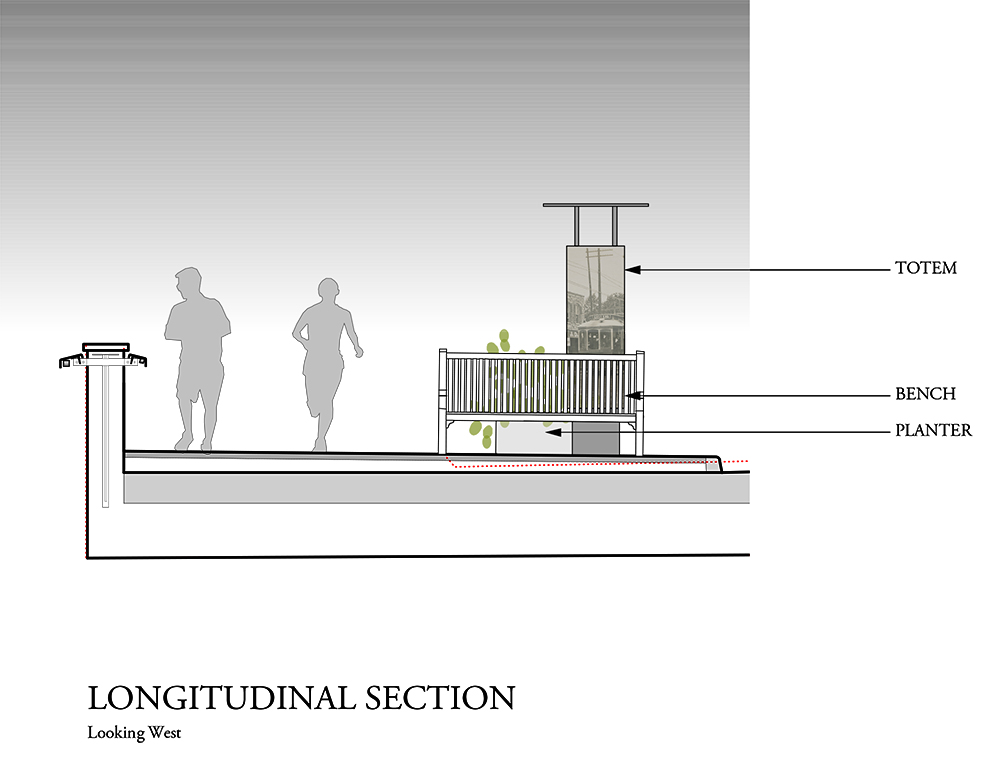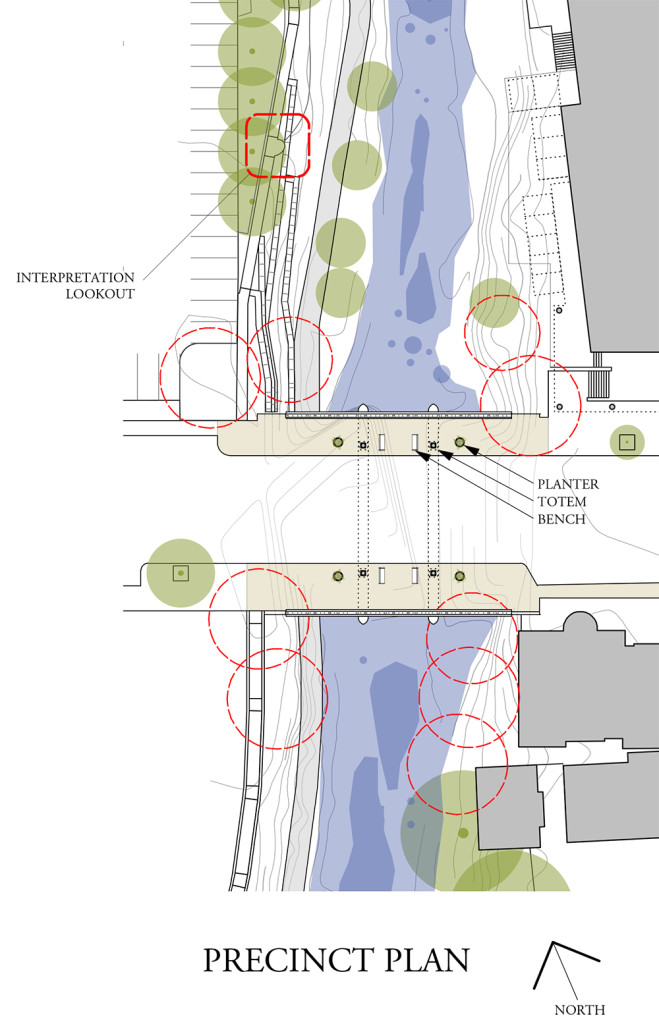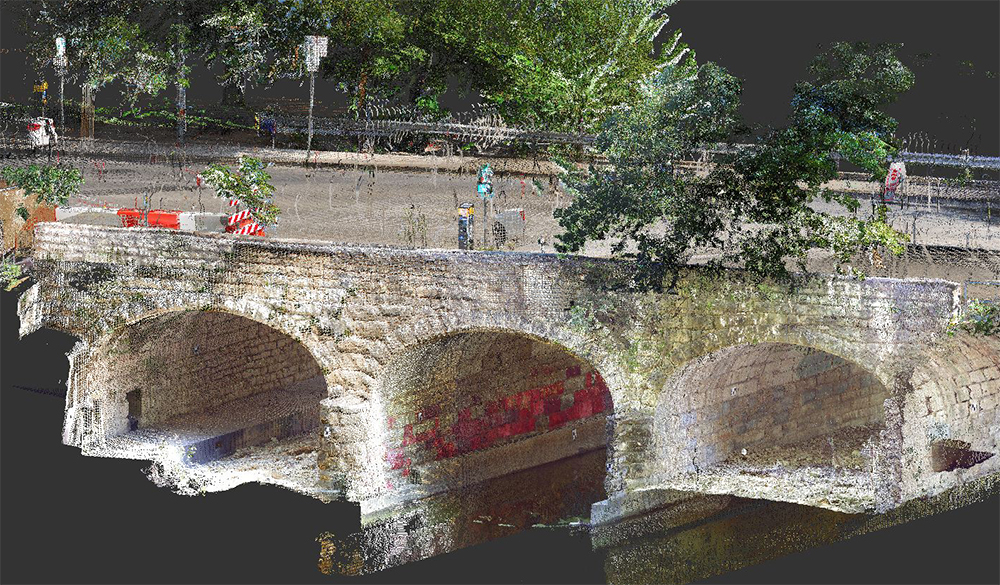The project’s primary purpose is to restore the structural integrity of the bridge, and to replace lost or missing elements. But simply restoring structural integrity can easily go unnoticed and, therefore unappreciated by the public, leaving an untapped opportunity to bring positive attention to an important element of architectural history as well as to the public stewardship involved in the restoration. So an architectural component was included with the idea to surround the bridge’s context with architectural and interpretive elements that celebrate the history of the bridge and make these restoration efforts visible and enjoyable for the public. The 1887 West Sixth Street Bridge is a three-arch masonry span over Shoal Creek in Austin, Texas.
At the street level, adapting an idea stemming from Austin’s Great Streets initiative, parking on the bridge is eliminated, giving that space over to more generous sidewalks. The design uses new lighting; new, distinctive and appropriate sidewalk paving, wood street furniture, and new iconic totem elements to bring definition to the bridge location while providing a focus for interpretive storytelling. To further emphasize the bridge’s importance, a dramatic plan for lighting the facades and lighting the insides of the bridge vaults is also included. Elsewhere, attention is paid to new, more naturalistic stone retaining walls and ecological restoration.
The structural analysis included a Laser Scanner Point Cloud Composition (provided by by the Center for Heritage Conservation, Texas A&M University) that precisely mapped all elements for analysis and future maintenance. These scans provide a detailed and highly accurate model of the existing bridge geometry to assist in determining the original geometry and the amount of past distortion in the arch rings.
A project of the Shoal Creek Conservancy under a contract with Sparks Engineering, Inc.



